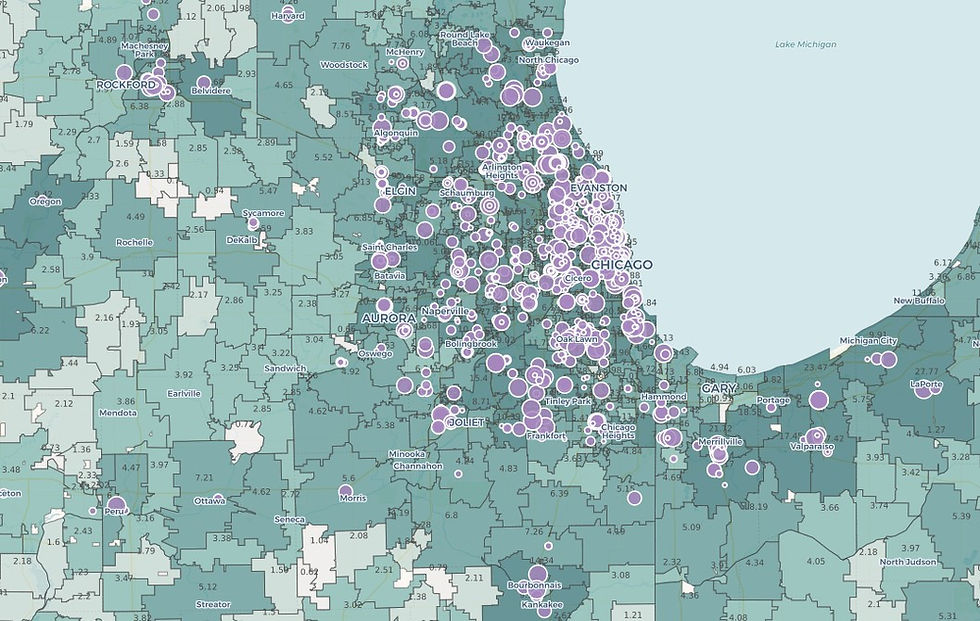Footprint Expansion 101
- david76407
- Jan 11, 2023
- 3 min read
As a healthcare provider, footprint strategy is one of the most critical strategic growth issues you face as a management team. The decision to add locations, expand from your core trade area and broaden your brand's reach is much more complicated than looking at a map and making a reasonable guess at which town looks good for expansion and what building do you see yourself in. Unfortunately though, this is too often how it's done.
To make footprint strategy more effective, we often ask people to consider the three key elements of demand, supply and existing market dynamics. The ability to win as a new entrant into a market is heavily dependent upon how a new location looks relative to these dimensions. Let's explore each one quickly:
Demand: The first and most critical element of a market is demand. How many potential patients are there in the "trade area"? A trade area is the distance that a patient is willing to travel for care. This will vary based upon practice specialty and local expectations. For example, a patient living in downtown Chicago may only be willing to travel a few blocks to go to physical therapy several days a week whereas that same type of patient may be willing to get in the car and drive 15 mins if they live out in a more rural area. Then there is a question of how many patients are there here? Age, gender, behavioral expectations, provider practices, etc. all impact the amount of demand that exists in a trade area. Understanding these patterns and concentrations can help you gain better insight into which locations provide the best availability of potential new patients.
Supply: The second critical element of a market is supply (supply and demand, I know - basic economics). Understanding how many "similar" providers are already servicing that trade area is critical to understanding if there is enough capacity to add another provider. Imagine a market that has 100 potential patients in it. If it takes 25 patients to make your business viable and there are already 4 providers serving that market - then everyone is averaging 25, making it a viable market for everyone. If, however, you add a 5th provider to the market, now everyone is down to 20 patients (and your ability to be viable as the new entrant is even more difficult). Contrast that with the same market of 100 patients but only 2 providers. By entering into that market, you have a much better opportunity of reaching the viability mark of 25 than you do in the previous example. Of course, few markets are this simple - the balance of supply and demand is much closer (and there are competitive elements at play as well), but by seeking these opportunities out you have a better chance of winning.

Existing Market Dynamics: The last critical element is related to the market dynamics that surround the location you are assessing. What is the typical rent and how does that compare to alternatives? What is the cost of living for the area? How much will you have to pay to attract labor to the area? Is there already an established labor market or will you have to create it? Each of these components will heavily influence the financial performance and ability operate your new location once it's up and going.
Prioritizing your expansion strategy should be driven by how you weight each of these three factors and assess them. Looking across a potential set of new locations, you may (will likely) find that the best locations surprise you. As you build your footprint strategy, ask yourself three questions:
1. Do you have data-driven evidence on all three of these elements to effectively make decisions on your footprint expansion plans?
2. How important are each of the factors above in making your choice for choosing a new location?
3. Are you looking broadly enough in your expansion strategy to ensure you are uncovering the high priority white space opportunities?
Armed with the data available today, footprint strategy can be much more effective than driving an area and guessing about what would be a great new spot. If you want to learn more about strategically building your expansion strategy, please reach out. We have deep experience in working with providers to design, build and deploy an effective footprint strategy and would be happy to help answer question you may have.



Comments